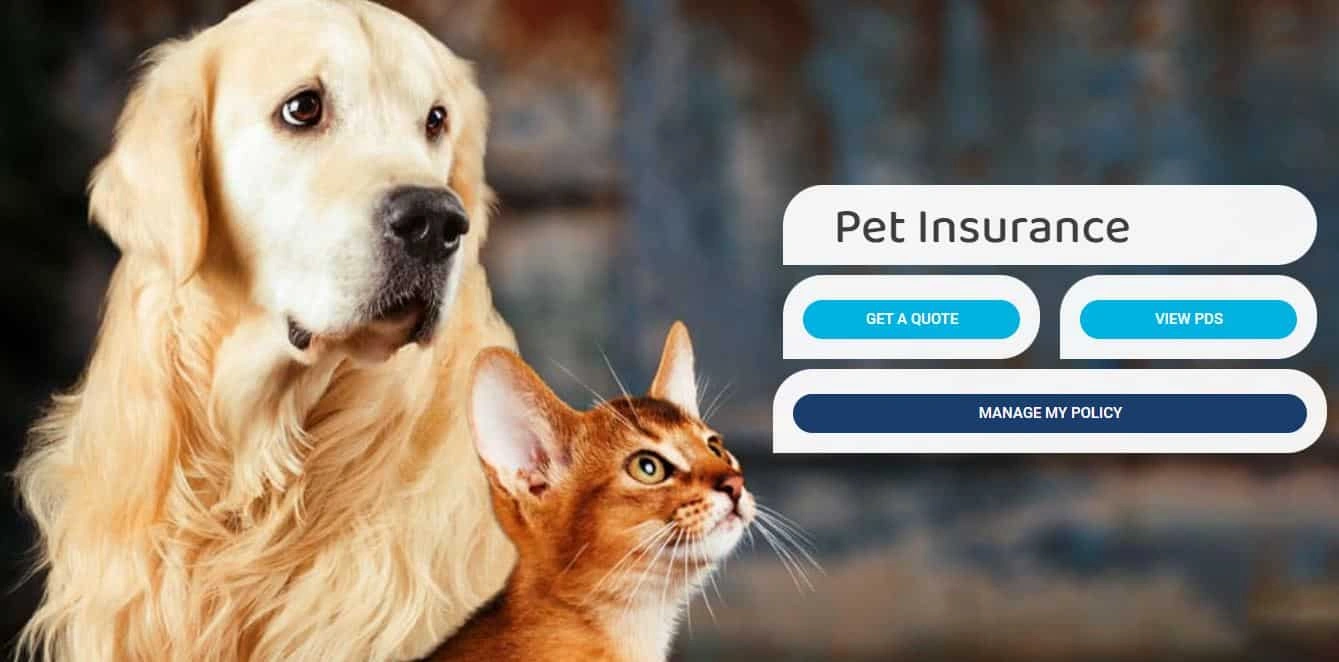To get cheap pet insurance for dogs, compare quotes from providers like Pets Best, Figo, Lemonade, ASPCA, Spot, and Embrace. Choose Accident-Only, Time-Limited, or higher-deductible policies to lower costs. Consider factors like breed, age, and location, and compare plan types Accident-Only, Max Benefit, and Lifetime to find the right balance of coverage and affordability.
Why Pet Insurance Matters
Owning a dog is like having a furry family member, loyal, playful, and always ready to brighten your day. But along with the joy comes responsibility. One major responsibility that often gets overlooked is planning for unexpected veterinary expenses. Dogs, like humans, can face sudden health emergencies such as accidents, injuries, or illnesses. Pet insurance acts as a financial safety net, ensuring that no dog owner has to choose between their wallet and their pet’s life.
Without insurance, a single surgery or emergency treatment could run into thousands of dollars, putting pet parents in stressful situations. Pet insurance isn’t about saving money instantly; it’s about protecting yourself from unpredictable financial shocks. Think of it as health insurance for your pup covering everything from accidents to chronic illnesses, depending on the plan you choose.
The Rising Cost of Veterinary Care
Veterinary care costs have been steadily climbing over the years. In fact, pet healthcare has started to mirror human healthcare in terms of expenses. Something as basic as a check-up or vaccination may not feel expensive, but when a dog requires diagnostic tests, surgery, or long-term medications, the bills can skyrocket.
For example, treating a torn ligament can cost over $3,000, while cancer treatment might exceed $10,000. Many dog owners are caught off guard by these expenses because they don’t anticipate how expensive modern veterinary medicine can be.
With advancements in pet healthcare, veterinarians now offer sophisticated treatments like chemotherapy, MRI scans, and orthopedic surgeries. While these services are lifesaving, they are also costly. Pet insurance helps offset these rising costs, making advanced treatments accessible to more families without causing financial strain.
Myths About Pet Insurance
Despite its importance, many dog owners shy away from buying pet insurance due to persistent myths. One common misconception is that pet insurance isn’t worth it because you’ll “never use it.” In reality, most dogs will face at least one significant health issue during their lifetime.
Another myth is that pet insurance is too expensive, but with so many customizable options available today, affordable coverage is possible even for tight budgets. Some owners believe insurance won’t cover much, but many providers now offer comprehensive plans covering everything from accidents and illnesses to routine wellness care.
There’s also a misunderstanding that older dogs can’t get insured, but many providers offer coverage with certain adjustments. By debunking these myths, more owners can see pet insurance for what it truly is: a safeguard that ensures your dog gets the best care possible when it matters most.
How Pet Insurance Works

What Does Pet Insurance Cover?
Pet insurance policies vary, but most plans cover accidents and illnesses. This means if your dog swallows something dangerous, breaks a bone, or develops a serious illness, your insurance will step in to cover the costs. Some plans also include coverage for hereditary conditions, diagnostic testing, hospitalization, and alternative therapies, such as acupuncture.
For example, if your dog develops hip dysplasia, a good policy can cover surgeries, medications, and follow-up treatments. Many insurers also give owners the option to add preventive care, covering vaccines, annual check-ups, dental cleanings, and flea/tick prevention.
The best part? You can customize your policy to match your budget and your dog’s needs. Unlike human health insurance, where you might be limited to specific providers, pet insurance typically allows you to visit any licensed veterinarian in your area or even across the country.
Common Exclusions You Should Know
While pet insurance is valuable, it’s not a magic solution that covers absolutely everything. Almost all policies exclude pre-existing conditions, meaning if your dog already has an illness before you purchase the policy, it won’t be covered. For instance, if your pup has been diagnosed with arthritis before getting insurance, treatments related to arthritis won’t be reimbursed.
Other exclusions may include cosmetic procedures (like ear cropping or tail docking), breeding-related expenses, and certain routine care unless you purchase a wellness add-on. Some providers also have breed-specific exclusions, especially for dogs prone to genetic conditions like Bulldogs or German Shepherds. Understanding these exclusions upfront helps you avoid surprises later when you file a claim. Always read the fine print before committing, so you know exactly what your policy includes and excludes.
The Role of Deductibles, Premiums, and Reimbursements
Pet insurance operates on a simple system of deductibles, premiums, and reimbursements. Your premium is the monthly cost you pay for coverage, much like a subscription. The deductible is the amount you pay out of pocket before insurance kicks in. This could be $100, $250, $500, or more, depending on the plan.
Then comes the reimbursement rate, which determines how much of the bill your insurance will cover after you’ve met your deductible. Most providers offer reimbursement levels of 70%, 80%, or 90%. For example, if your dog needs a $2,000 surgery and you have a $250 deductible with 80% reimbursement, you’d pay $650 while insurance covers $1,350.
Choosing the right balance between these three factors is key to finding cheap pet insurance that still offers solid protection. Lower premiums may mean higher deductibles, while higher premiums often bring lower out-of-pocket expenses when emergencies strike.
Benefits of Having Dog Insurance

Financial Security During Emergencies
Accidents happen when you least expect them. Your playful Labrador might swallow a sock, or your small Terrier could break a leg during a jump. These emergencies often require immediate medical attention, which can be financially overwhelming. Dog insurance ensures you don’t have to delay treatment or make heartbreaking choices due to money.
Instead of stressing over whether you can afford the surgery, you can focus entirely on getting your furry friend the best care possible. Having insurance doesn’t just save money; it saves time. With coverage, you can authorize life-saving procedures right away without hesitation.
Over the years, this financial safety net can add up to thousands of dollars saved. For many pet parents, insurance transforms an unexpected $5,000 vet bill into a manageable few hundred dollars, making emergencies far less devastating financially.
Peace of Mind for Pet Owners
Caring for a dog already comes with enough worries, such as whether they are eating right, getting enough exercise, or feeling well. Pet insurance takes one major stress off your shoulders: the fear of crippling vet bills. Knowing you have coverage means you won’t have to drain your savings account or go into debt to pay for treatment.
This peace of mind is priceless. Instead of hesitating to take your pup to the vet at the first sign of trouble, you’ll feel confident scheduling an appointment, knowing most of the costs will be reimbursed. Pet insurance also makes it easier to plan your budget since you’re paying a predictable monthly premium instead of being blindsided by unexpected four-figure bills. In short, it helps you focus more on your pet’s happiness and well-being rather than worrying about finances.
Encourages Better Veterinary Care
When cost isn’t a barrier, pet owners are more likely to seek medical care for their dogs promptly. Insurance encourages preventive care and timely treatment, which ultimately improves the quality and longevity of your dog’s life.
For instance, instead of delaying an X-ray or diagnostic test because of the expense, you’ll feel comfortable moving forward with it when insurance covers most of the cost. Some policies even incentivize regular wellness visits by covering vaccinations, annual exams, and screenings.
This proactive approach helps catch health issues early, preventing small problems from escalating into major, costly ones. Ultimately, pet insurance promotes a healthier lifestyle for your furry companion while easing the financial responsibility for you.
Types of Dog Insurance Plans

Accident-Only Coverage
If you’re looking for the cheapest dog insurance option, accident-only coverage is a starting point. As the name suggests, these plans only cover emergencies related to accidents such as broken bones, swallowed objects, or injuries from car accidents.
They do not cover illnesses, so if your dog develops cancer, allergies, or infections, you’d have to cover those expenses out of pocket. Accident-only plans are best suited for young, healthy dogs that are less likely to develop illnesses in the near future.
They provide affordable monthly premiums while still protecting you from sudden, high-cost emergencies. Think of it as having car insurance that only covers collisions but not wear and tear. While limited, it still provides crucial financial protection in high-risk situations.
Accident and Illness Plans
This is the most popular type of pet insurance because it offers balanced coverage. Accident and illness plans cover both unexpected injuries and medical conditions such as infections, diabetes, arthritis, or cancer. If your dog needs surgery, prescription medication, or ongoing treatments, this type of plan has you covered.
The cost is higher than accident-only insurance, but it’s a smarter long-term investment because it prepares you for both sudden accidents and chronic health conditions. Since most dogs eventually develop age-related illnesses, having this type of plan ensures you’re not caught off guard down the line. Many providers allow customization so you can choose your deductible, reimbursement rate, and annual limit to keep premiums affordable while still enjoying comprehensive protection.
Wellness and Preventive Care Plans
Unlike traditional insurance, wellness plans focus on covering routine veterinary care. These plans often pay for vaccinations, flea/tick prevention, annual exams, microchipping, and dental cleanings. While they don’t protect against emergencies or serious illnesses, they can save you money on predictable annual expenses. Think of them as a prepaid health plan for your dog’s routine needs.
Some pet owners bundle a wellness plan with accident and illness coverage to create a full-spectrum policy. While this increases monthly premiums, it also ensures that both preventive care and emergencies are covered. Wellness plans are ideal for proactive pet parents who want to stay on top of their dog’s health while managing predictable expenses in a budget-friendly way.
Comprehensive Coverage Plans
For dog owners seeking maximum protection, comprehensive coverage is the gold standard. These plans combine accident, illness, and wellness care into one policy. They cover almost everything from emergencies and surgeries to preventive checkups and vaccinations. While these plans come with higher premiums, they virtually eliminate unexpected vet bills, providing complete financial peace of mind.
Comprehensive coverage is particularly beneficial for breeds prone to health issues or older dogs that require frequent vet visits. If you see your dog as a true family member and want the best care possible without worrying about costs, a comprehensive plan is worth considering. It’s the most expensive option upfront, but it often saves the most money in the long run.
Factors That Affect the Cost of Pet Insurance

Breed and Size of Your Dog
Not all dogs cost the same to insure. Breed plays a huge role in determining premiums because certain breeds are more prone to hereditary conditions. For example, large breeds like German Shepherds and Great Danes are more likely to suffer from hip dysplasia, while smaller breeds like Dachshunds are prone to back problems. Insurance providers take these risks into account when setting prices.
Size also influences costs; larger dogs often require higher medication doses, more anesthesia, and larger medical equipment, all of which increase treatment expenses. Consequently, insuring a Labrador may cost more than insuring a Chihuahua, even if both are healthy. While you can’t change your dog’s breed or size, understanding this factor helps explain why premiums vary and guides you in choosing the right balance of coverage and cost.
Age and Pre-existing Conditions
Just like humans, the older your dog gets, the more likely they are to face health problems. Insurance companies know this, which is why premiums increase as your dog ages. Puppies and younger dogs are usually cheaper to insure because they’re less likely to suffer from chronic illnesses.
On the other hand, senior dogs are at higher risk of conditions like arthritis, diabetes, or cancer, which makes them more expensive to cover. Some insurers even have age limits, refusing to offer new policies for dogs above a certain age. Pre-existing conditions are another key factor; if your dog already has a diagnosed illness before you purchase coverage, it typically won’t be covered.
For example, if your Bulldog already has skin allergies, treatments related to those allergies won’t be reimbursed. This makes it crucial to purchase insurance early, before any health issues develop, ensuring your dog gets maximum coverage throughout their life.
Location and Veterinary Costs
Where you live also plays a significant role in determining your dog’s insurance premium. Veterinary costs vary widely across regions, much like the cost of living. For example, vet services in big cities like New York or Los Angeles tend to be more expensive than in smaller towns or rural areas.
Insurance companies adjust their pricing accordingly to reflect the higher or lower cost of veterinary care in your area. Even within the same state, urban areas typically have higher premiums than suburban or rural regions.
Additionally, if your area has a shortage of veterinarians, clinics may charge more, which indirectly impacts insurance prices. While you can’t always control where you live, it’s helpful to understand how geography influences insurance costs so you can make a more informed decision when comparing providers.
Coverage Limits and Customizations
The structure of your policy also has a big impact on cost. Insurance providers let you customize your plan with options like annual coverage limits, reimbursement rates, and deductibles.
For example, a policy with a $20,000 annual limit, 90% reimbursement, and a $100 deductible will cost much more than one with a $5,000 annual limit, 70% reimbursement, and a $500 deductible. The more comprehensive your coverage, the higher your premium will be. However, customization allows you to balance affordability with protection.
If you want cheap monthly payments, you might choose a higher deductible and lower reimbursement percentage. But if you’d rather minimize out-of-pocket costs during emergencies, you could opt for a lower deductible and higher reimbursement. These adjustments help tailor insurance to your specific needs and budget, making it possible to find affordable coverage without sacrificing essential protection.
How to Find Cheap Pet Insurance for Dogs

Comparing Multiple Providers
One of the best ways to find affordable insurance is to shop around. Just like car or health insurance, different providers offer different rates, even for the same type of coverage. Don’t settle for the first quote you receive. Compare at least three to five providers before making a decision.
Look not only at the monthly premium but also at what’s included in the plan. Some insurers might offer lower premiums but exclude key treatments, making them more expensive in the long run. Pay attention to claim processing times, customer service reviews, and policy flexibility.
Comparison websites can make this process easier by giving you side-by-side breakdowns of coverage and costs. Remember, the cheapest plan isn’t always the best; it’s about finding the right balance of affordability and coverage that meets your dog’s unique needs.
Using Online Quote Tools
Most insurance providers now have easy-to-use online calculators that generate personalized quotes in minutes. All you need to do is enter your dog’s breed, age, weight, and location to see estimated premiums. These tools allow you to adjust coverage options like deductible amounts, reimbursement percentages, and annual limits to see how they affect your monthly payment.
This makes it simple to experiment with different setups until you find a combination that’s both affordable and protective. For example, you might discover that raising your deductible by just $100 could lower your premium significantly without drastically increasing your out-of-pocket costs. Using these quote tools is free and quick, so there’s no reason not to try several providers before making your choice.
Bundling Discounts and Membership Programs
Another way to reduce costs is by taking advantage of bundling and membership discounts. Some pet insurance providers offer reduced rates if you insure multiple pets under the same policy. Others partner with veterinary clinics, retailers, or professional organizations to provide special deals.
For instance, certain credit card companies or pet store memberships include access to discounted insurance rates. If you already have home or auto insurance, check whether your provider offers pet insurance as an add-on; it could come with a loyalty discount.
While these savings might not seem huge at first, they add up over time, making insurance much more budget-friendly. Always ask about available discounts before signing up; you might qualify for savings you didn’t even know existed.
Tips for Lowering Monthly Premiums
If you’re still struggling to find an affordable plan, there are several strategies to reduce your premium without sacrificing too much coverage.
First, consider choosing accident-only insurance for younger, healthy dogs.
Second, increase your deductible. This lowers your monthly payments while still providing financial protection in emergencies.
Third, select a lower reimbursement percentage, like 70% instead of 90%, which reduces premiums while keeping most of your expenses covered.
Finally, start your policy early while your dog is still young and healthy. The earlier you enroll, the lower your premiums will be, and you’ll avoid exclusions for pre-existing conditions.
With these adjustments, you can secure reliable insurance at a price that fits your budget.
Top Affordable Pet Insurance Providers

Best Value-for-Money Options
Some insurance providers are known for striking a good balance between affordability and comprehensive coverage. These companies typically offer flexible plans that let you customize your deductible, reimbursement rate, and coverage limit to keep costs low.
They also provide reliable customer service and fairly quick claims processing, which is important when you’re dealing with urgent medical bills. Many budget-friendly providers focus on accident and illness coverage with optional wellness add-ons, giving you the flexibility to pay only for what you need.
Value-for-money doesn’t always mean the cheapest; it means getting the most coverage possible for a fair monthly price. This makes these insurers especially appealing to pet owners who want affordable protection without compromising too much on benefits.
Providers with Flexible Customization
Insurance is not one-size-fits-all, and providers that allow high levels of customization are often the most affordable in practice. With flexible policies, you can tweak deductibles, reimbursement percentages, and annual limits until you find the sweet spot that works for your budget.
For example, if you have a younger dog, you might choose a higher deductible and lower reimbursement rate since your pup is less likely to need expensive care. Providers that let you make these adjustments give you control over how much you spend each month, making them ideal for budget-conscious owners. Some even let you switch your plan annually, so you can increase coverage as your dog ages and becomes more prone to health issues.
Companies Known for Fast Claims Processing
Affordability is important, but so is speed. Some of the best pet insurance companies are recognized for processing claims quickly, sometimes in just a few days. This ensures you’re reimbursed promptly, reducing financial strain after paying a vet bill upfront. Many providers now offer mobile apps where you can upload receipts, track claim status, and receive reimbursements directly to your bank account.
Fast claims processing can make a huge difference, especially if you’re dealing with ongoing treatments and frequent vet visits. Affordable insurance isn’t just about the monthly premium; it’s also about how easily and quickly you can access the financial support you’re paying for.
Comparing Cheap vs. Comprehensive Coverage

Pros and Cons of Going Cheap
Cheap pet insurance has its advantages. It provides basic protection at a low monthly cost, making it accessible for families on a budget. Accident-only plans, for example, can save you from massive bills if your dog suffers a sudden injury. However, the downside is that cheap plans often exclude illnesses, routine care, or hereditary conditions.
This means you could still face high out-of-pocket costs if your dog develops cancer, allergies, or other chronic conditions. In short, cheap insurance is great for peace of mind against accidents, but it is limited when it comes to long-term health protection. It’s a bit like driving with only liability car insurance; it covers emergencies but leaves you vulnerable to other risks.
Long-Term Value of Comprehensive Plans
While comprehensive insurance plans come with higher monthly premiums, they often provide better long-term value. These policies cover both accidents and illnesses, plus optional preventive care. Over the years, as your dog ages and health problems become more likely, the coverage pays off significantly.
For example, a comprehensive plan might cost $40 more per month than a basic plan, but if your dog develops diabetes or arthritis, you could save thousands in treatment costs. Comprehensive insurance is especially beneficial for breeds prone to genetic conditions, making it worth the investment for many pet owners. In essence, comprehensive plans act as true health insurance for dogs, ensuring you’re prepared for every stage of their life.
Real-Life Scenarios to Consider
Imagine two dog owners, one with cheap accident-only insurance and one with comprehensive coverage. The first owner’s Labrador breaks a leg, and insurance covers the $3,000 surgery, saving them from financial stress. But later, the same dog develops cancer, and because the plan doesn’t cover illnesses, the owner faces $8,000 in bills alone.
Meanwhile, the second owner pays higher premiums but has nearly all of those costs covered under their comprehensive plan. These scenarios highlight the trade-off between affordability now and protection later. Choosing between cheap and comprehensive coverage ultimately depends on your dog’s breed, age, and your own financial situation.
Hidden Costs to Watch Out For

Co-Payments and Reimbursement Rates
Many pet owners assume their insurance will cover 100% of vet bills, but that’s rarely the case. Most providers require co-payments, meaning you’ll still pay a portion of the total cost. For example, if your plan has an 80% reimbursement rate, you’ll be responsible for the remaining 20% of every bill.
This might not sound like much, but for a $5,000 surgery, you’d still owe $1,000. Understanding how reimbursement works is critical when calculating the true cost of your insurance. Don’t be fooled by low premiums; if reimbursement rates are low, you might end up paying more overall.
Annual or Lifetime Coverage Limits
One of the sneakiest hidden costs in pet insurance is the coverage limit. Some policies set annual limits (the maximum amount they’ll pay per year) or lifetime limits (the total they’ll pay for your pet over their entire life). For example, if your plan has a $10,000 annual limit and your dog’s cancer treatment costs $12,000, you’ll need to cover the extra $2,000 out of pocket. Lifetime limits can be even trickier.
Once you hit the cap, the insurance company stops covering your pet altogether, regardless of how long you’ve been paying premiums. Many cheap policies look attractive up front, but come with restrictive limits that drastically reduce their value when you need them most. Always check whether your plan has annual or lifetime limits, and if possible, opt for unlimited coverage; even if it costs a little more, it’s usually worth it in the long run.
Waiting Periods and Exclusions
Another often-overlooked detail is the waiting period. Almost all pet insurance policies have a waiting period after enrollment before coverage kicks in, usually 2 to 14 days for accidents and up to 30 days or more for illnesses. Some conditions, like hip dysplasia or cruciate ligament injuries, may even have waiting periods of six months to a year.
If your dog develops a condition during the waiting period, it will be considered pre-existing and excluded from coverage permanently. This is why buying insurance early, while your dog is still healthy, is crucial. Exclusions also vary widely by provider. For instance, some plans exclude dental illnesses unless you buy an add-on, while others won’t cover alternative therapies like acupuncture. Reading the fine print ensures you don’t get caught off guard when filing a claim.
Alternatives to Pet Insurance

Pet Savings Accounts
If traditional pet insurance doesn’t fit your budget, one alternative is creating a dedicated pet savings account. This means setting aside a fixed amount of money each month, similar to paying an insurance premium, but instead of going to an insurance company, it goes into your own emergency fund. Over time, this fund can grow and be used for unexpected vet bills.
The advantage is that you don’t lose money if your dog stays healthy; the savings are always yours. The downside, however, is that it takes time to build up a meaningful balance. If your dog needs an expensive surgery early on, you may not have enough saved to cover it. A savings account works best for owners with disciplined budgeting skills who prefer to self-insure instead of paying premiums.
Veterinary Discount Plans
Another cost-effective option is a veterinary discount plan. Unlike insurance, these plans don’t reimburse you for expenses. Instead, they provide discounted rates for services at participating veterinary clinics. You pay a small monthly or annual fee for membership, and in return, you get reduced prices on exams, procedures, and medications.
These plans can save you anywhere from 10% to 50% on vet bills. The catch is that you’re limited to a specific network of clinics, so they’re not as flexible as pet insurance. Still, if you live near a participating vet and your dog needs frequent care, discount plans can significantly lower costs without the complexity of insurance claims.
Charitable Funds and Assistance Programs
There are also nonprofit organizations and charitable funds designed to help pet owners who can’t afford veterinary care. Some of these programs provide grants or financial assistance for emergency procedures, while others help cover costs for specific illnesses like cancer.
Additionally, some veterinary schools run low-cost clinics, offering affordable care from supervised students. While these options aren’t an insurance replacement, they can serve as valuable safety nets in times of financial hardship. If you’re struggling to afford insurance, keeping a list of local and national assistance programs could make a huge difference when emergencies strike.
Real-Life Stories of Pet Insurance Savings

Emergencies Where Insurance Saved Thousands
Many pet owners have experienced firsthand how life-saving insurance can be both for their dogs and their wallets. Take, for example, a Golden Retriever that swallowed a toy and needed emergency surgery. The total bill came to nearly $5,000, but because the owner had insurance, they only paid about $700 after reimbursement.
In another case, a German Shepherd was diagnosed with hip dysplasia, requiring multiple surgeries and long-term medication. The total cost exceeded $15,000 over several years, but insurance covered the majority, allowing the dog to live a comfortable, active life. These stories highlight why insurance isn’t just a luxury; it’s a crucial financial tool that ensures dogs receive the treatment they need without owners going into debt.
Owners Who Regretted Not Having Insurance
On the flip side, countless dog owners regret not purchasing insurance when they had the chance. Imagine a family with a young Labrador that developed cancer at just three years old. Without insurance, the cost of chemotherapy and follow-up treatments quickly reached $12,000, forcing the family to make heartbreaking choices about their dog’s care.
In another case, a Dachshund with a slipped disc required spinal surgery costing over $8,000. Because the owners didn’t have insurance, they had to take out a loan to cover the expenses. These scenarios emphasize how unpredictable pet health can be and how devastating it is to face huge bills unprepared. Regret is a powerful teacher, and many owners who go through these situations vow to ensure their next pet as soon as possible.
Step-by-Step Guide to Choosing the Right Policy

Assessing Your Dog’s Health and Lifestyle
Pet Insurance for Dogs. The first step in choosing insurance is evaluating your dog’s specific needs. Consider their age, breed, and lifestyle. For example, an active breed like a Border Collie may benefit from accident coverage due to higher injury risks, while a senior Bulldog may need a comprehensive plan that includes chronic illness management.
Think about your dog’s family history, too. If their breed is prone to certain conditions, make sure the policy doesn’t exclude them. Tailoring insurance to your dog’s unique health risks ensures you’re not paying for unnecessary coverage while still protecting against likely issues.
Comparing Policy Features
Pet Insurance for Dogs, Pet Insurance for Dogs. Once you know your dog’s needs, the next step is comparing features across different insurance providers. Don’t just look at the monthly premium, dig deeper into the specifics of what each plan offers. Pay attention to reimbursement rates, annual limits, deductibles, and exclusions. Some plans cover hereditary conditions, while others don’t.
Some include alternative therapies like hydrotherapy or acupuncture, which may be valuable for dogs recovering from injuries. Others offer wellness add-ons for routine care. To make the comparison easier, create a table or spreadsheet where you list providers side by side with their key features. This helps you see which plan offers the best balance of affordability and protection.
Reading the Fine Print Carefully
Pet Insurance for Dogs, Pet Insurance for Dogs: Before signing on the dotted line, read every detail of the policy. This step may feel tedious, but it’s crucial to avoid future surprises. Look for clauses about waiting periods, exclusions, and pre-existing conditions. Check whether there are breed-specific restrictions, as some companies exclude coverage for common issues in certain breeds (like hip dysplasia in German Shepherds).
Pay attention to renewal terms too; some providers increase premiums significantly as your dog ages, while others keep them stable. Also, find out how claims are processed. Do you pay upfront and wait for reimbursement, or does the insurance company pay the vet directly? The fine print often contains the real “cost” of insurance, and being aware of these details ensures you know exactly what you’re signing up for.
Future of Pet Insurance

Trends in Veterinary Care Costs
Pet Insurance for Dogs. Veterinary medicine has advanced rapidly in recent years, offering treatments that rival human healthcare. From MRI scans to chemotherapy, the options available to dogs today are more sophisticated and more expensive than ever before. Unfortunately, these rising costs aren’t slowing down anytime soon.
As treatments become more advanced, bills will continue climbing. This trend makes pet insurance increasingly valuable, since it shields owners from skyrocketing expenses. In fact, many experts predict that within the next decade, pet insurance will become as common as car insurance in households with pets.
Innovative Insurance Options Emerging
Pet Insurance for Dogs: The pet insurance industry is evolving to keep up with demand. New providers are entering the market, offering unique plans that cater to different needs.
For example, some companies now provide subscription-style wellness plans that bundle preventive care with accident coverage. Others are experimenting with “usage-based” insurance, where premiums are adjusted based on your dog’s activity level, tracked via wearable devices.
Some insurers are even offering direct-pay options, where the vet bills the insurance company directly, eliminating the need for owners to pay out of pocket and wait for reimbursement. These innovations aim to make insurance more accessible, affordable, and convenient for pet parents.
The Role of Technology in Pet Insurance
Pet Insurance for Dogs: Technology is transforming how pet insurance works. Mobile apps now allow owners to file claims instantly, track reimbursements, and manage their policies with just a few taps. Telemedicine is also becoming integrated with some insurance plans, giving owners access to virtual vet consultations at no extra cost. Wearable devices that monitor a dog’s activity, heart rate, and sleep patterns are being used to personalize insurance policies, potentially lowering premiums for healthier dogs.
In the future, artificial intelligence may even predict health risks based on breed and lifestyle data, allowing insurers to offer more tailored coverage. These advancements signal a future where pet insurance is smarter, faster, and more pet-focused than ever before.
Conclusion
Cheap pet insurance for dogs doesn’t have to mean sacrificing quality coverage. With the rising costs of veterinary care, having a financial safety net for your furry friend is more important than ever. By understanding how pet insurance works, comparing providers, and tailoring coverage to your dog’s specific needs, you can strike the perfect balance between affordability and protection.
Whether you choose accident-only coverage for a young, healthy pup or a comprehensive plan for a senior dog, the key is to plan. Insurance not only saves money but also ensures your dog receives the best care possible without financial stress holding you back. At the end of the day, pet insurance is less about cost and more about peace of mind, giving you confidence that you’ll always be able to care for your loyal companion when they need it most.
FAQ
What’s the cheapest dog insurance available today?
Pet Insurance for Dogs, Accident-only plans are typically the cheapest option, with some starting as low as $10–$20 per month. However, these only cover emergencies and exclude illnesses, so make sure it fits your dog’s needs before choosing.
Does pet insurance cover pre-existing conditions?
Pet Insurance for Dogs: Most providers exclude pre-existing conditions, meaning any illness or injury diagnosed before enrollment won’t be covered. However, some insurers may cover conditions that have been fully cured and symptom-free for a certain period.
How do I lower my dog insurance premiums?
Pet Insurance for Dogs: You can reduce premiums by choosing a higher deductible, lowering your reimbursement rate, or selecting accident-only coverage. Enrolling your dog while they’re young also helps lock in lower rates.
Can I get pet insurance for an older dog?
Pet Insurance for Dogs, Yes, many insurers cover senior dogs, but premiums are higher, and some conditions may be excluded. It’s best to insure your dog as early as possible to avoid restrictions.
Is accident-only insurance worth it for dogs?
Pet Insurance for Dogs, Accident-only insurance can be worth it for young, healthy dogs since it protects against costly emergencies like broken bones or swallowed objects. However, it won’t help with illnesses or chronic conditions, which are common as dogs age.




